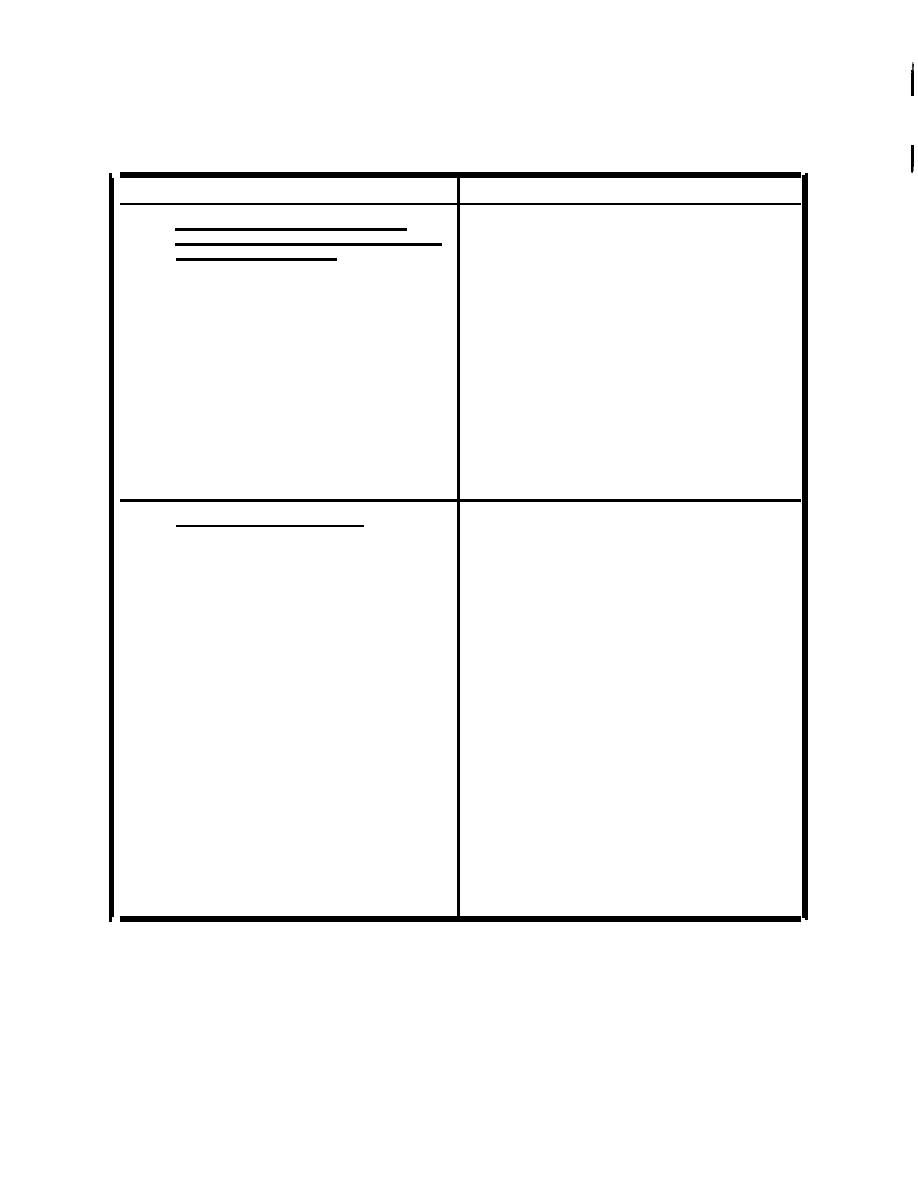

Custom Search
|
|

|
||
 TM 5-683 /NAVFAC M-116/AFJMAN 32-1083
I
Table 2-2. Trouble-shooting procedures for switchgear equipment - continued.
REMEDY
CAUSE
7.
F a i l u r e in Function of All
Instruments and Devices Having
P o t e n t i a l Windings
L o o s e nuts, binding screws or
Tighten all loose connections or
b r o k e n wire at terminals.
r e p a i r broken wire circuits.
Renew fuses.
B l o w n fuse in potential
t r a n s f o r m e r circuit.
R e p a i r open circuit and check entire
Open circuit in potential
t r a n s f o r m e r primary or
c i r c u i t s for intactness and good
condition.
secondary.
Remove the short.
C.T. circuit shorted or
shorting strap left.
8.
B r e a k e r Fails to Trip
M e c h a n i s m binding or sticking
Lubricate
mechanism.
due to lack of lubrication.
Mechanism out of adjustment.
A d j u s t all mechanical devices, such
as toggles, stops buffers, opening
springs, etc., according to
i n s t r u c t i o n book.
If worn
E x a m i n e surface of latch.
Failure of lacking device.
or corroded, it should be replaced.
C h e c k latch wipe and adjust
a c c o r d i n g to instruction book.
R e p l a c e damaged coil.
D a m a g e d trip coil.
R e p l a c e blown fuse.
B l o w n fuse in control circuit
( w h e r e trip coils are
potential type).
Repair faulty wiring. See that all
b i n d i n g screws are tight.
Faulty connections (loose or
broken wire) in trip circuit.
2-19
|
 
|
|
 |
||